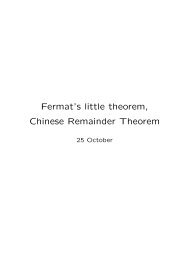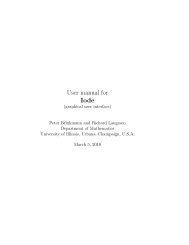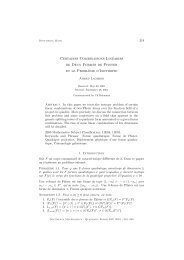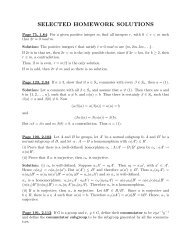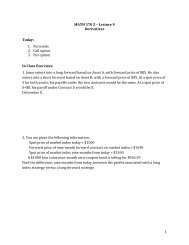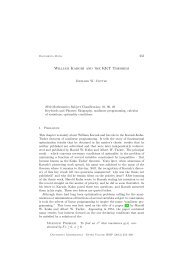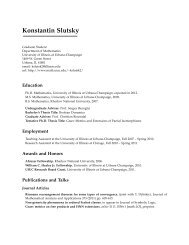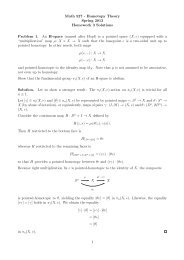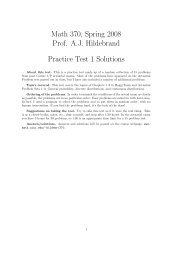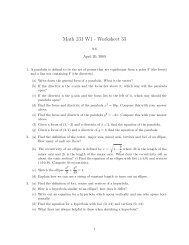Eisenstein series and approximations to pi - Mathematics
Eisenstein series and approximations to pi - Mathematics
Eisenstein series and approximations to pi - Mathematics
You also want an ePaper? Increase the reach of your titles
YUMPU automatically turns print PDFs into web optimized ePapers that Google loves.
8 BRUCE C. BERNDT AND HENG HUAT CHAN<br />
Now, by rearranging the second equation in (4.4), with the help of (4.1)<br />
<strong>and</strong> (4.2), we find that<br />
(4.5) P(q) = R(q) 12q dz<br />
+<br />
Q(q) z dq .<br />
From the chain rule <strong>and</strong> (4.5), it follows that, for any positive integer n,<br />
P(q n ) = R(qn )<br />
Q(qn 12q<br />
+<br />
) nz(qn )<br />
Subtracting (4.5) from the last equality <strong>and</strong> setting<br />
we find that<br />
(4.6)<br />
nP(q n ) − P(q) =n R(qn )<br />
Q(qn R(q)<br />
−<br />
) Q(q)<br />
m := z(q)<br />
z(q n ) ,<br />
q<br />
+ 12<br />
z(qn )<br />
=n R(qn )<br />
Q(qn R(q) q dm<br />
− − 12<br />
) Q(q) m dq .<br />
dz(qn )<br />
.<br />
dq<br />
dz(q n )<br />
dq<br />
q dz(q)<br />
− 12<br />
z(q) dq<br />
Our next aim is <strong>to</strong> replace dm<br />
dm<br />
in (4.6) by<br />
dq dJ (J(q), J(qn )). From (2.1),<br />
the definition of J, (4.4), (4.1), <strong>and</strong> (4.2), upon differentiation, we find that<br />
(4.7)<br />
q dJ<br />
dq =(3Q2 Q ′ − 2RR ′ )Q3 − 3Q2Q ′ (Q3 − R2 )<br />
Q6 = {Q2 (PQ − R) − R(PR − Q 2 )}Q 3 − Q 2 (PQ − R)(Q 3 − R 2 )<br />
Q 6<br />
= RQ3 − R 3<br />
Q 4<br />
which implies that<br />
= R∆<br />
Q 4 = z6√ 1 − J J<br />
Q = z2 J √ 1 − J,<br />
(4.8) z 2 1<br />
(q) =<br />
J(q) dJ(q)<br />
q<br />
1 − J(q) dq .<br />
Replacing q by q n in (4.8) <strong>and</strong> simplifying, we deduce that<br />
(4.9) z 2 (q n ) =<br />
1<br />
nJ(qn ) 1 − J(qn ) q dJ(qn )<br />
.<br />
dq




